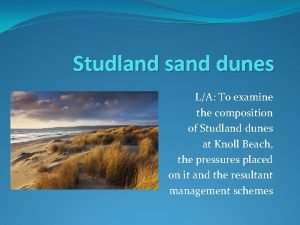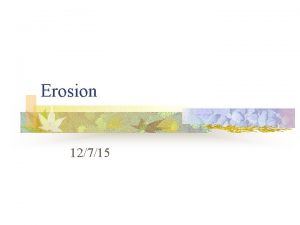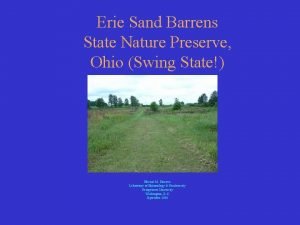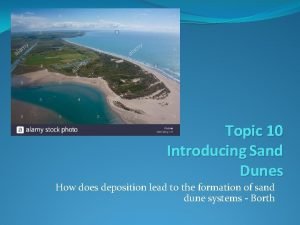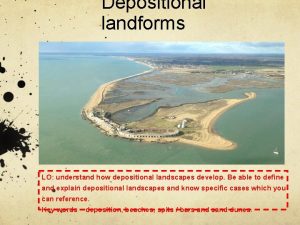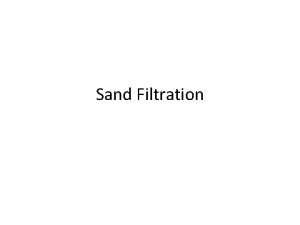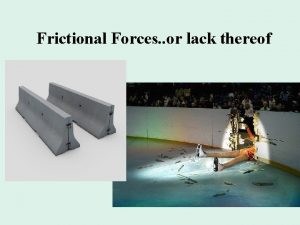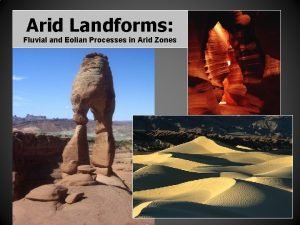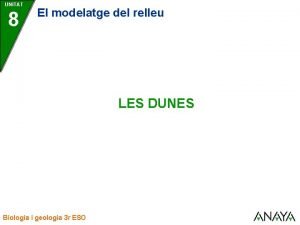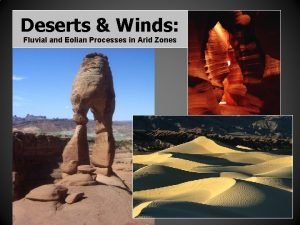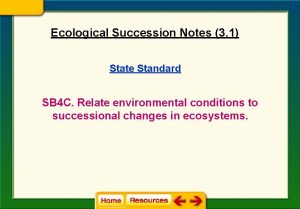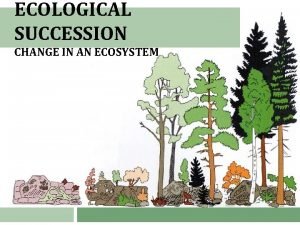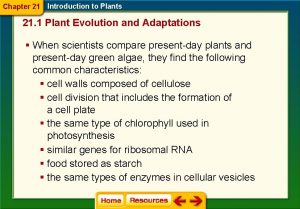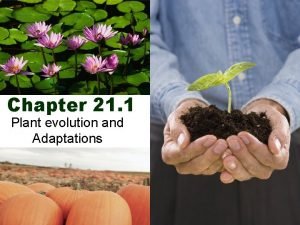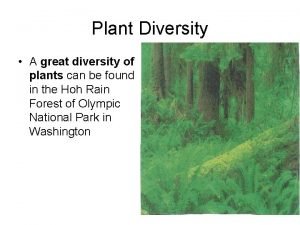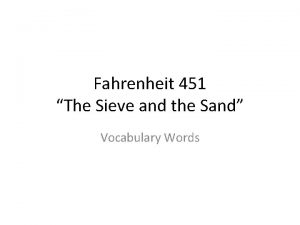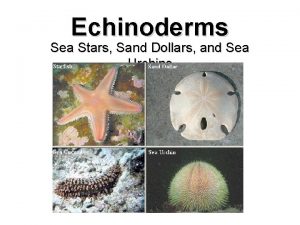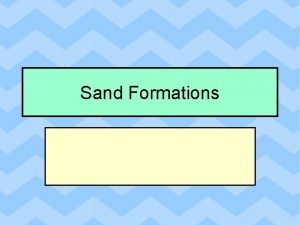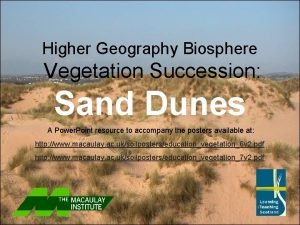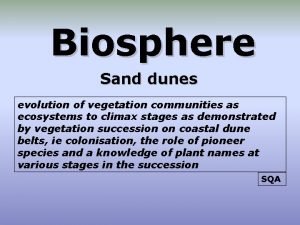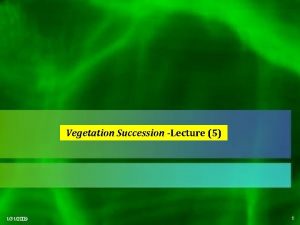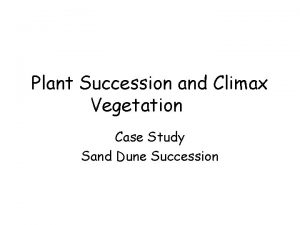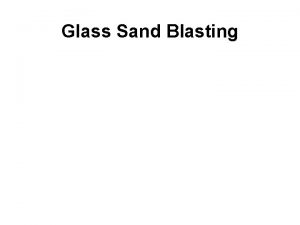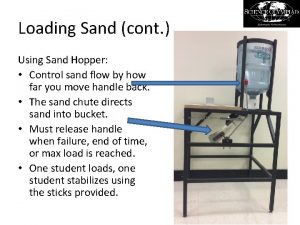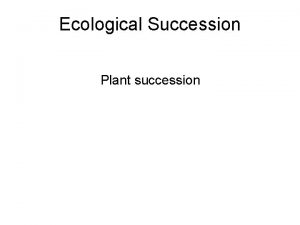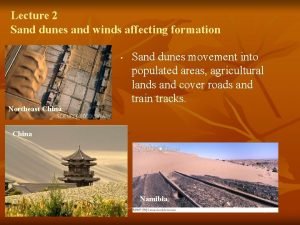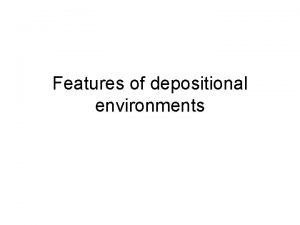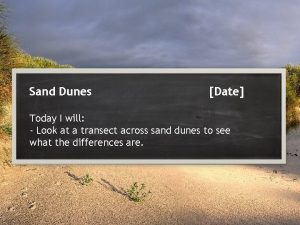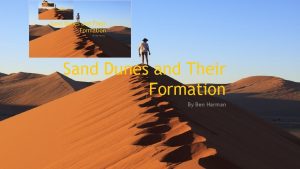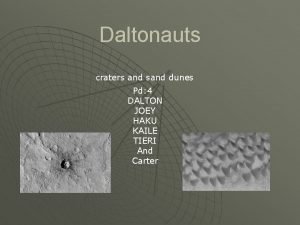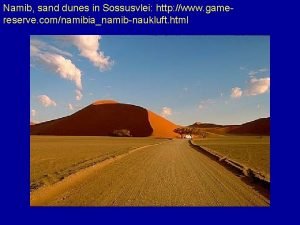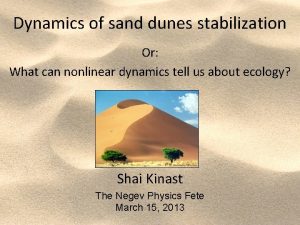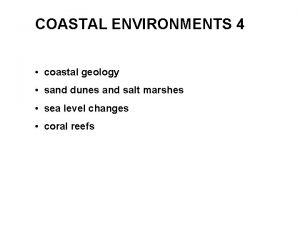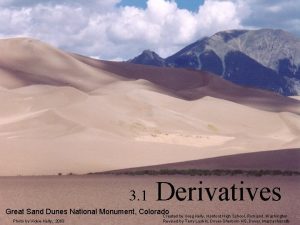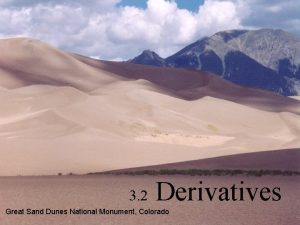Vegetation Succession Sand Dunes Plant Succession Evolution of

































- Slides: 33

Vegetation Succession Sand Dunes

Plant Succession • • • Evolution of plant communities From pioneer species to climax vegetation Related to change in the environment Change brought about by the plants themselves This change then favours new species ‘Plants are the architects of their own demise’

Sand Dune Transect

The Foreshore Salty Blowing sand Dry

Saltwort Fleshy leaves store water Low growing Deep tap roots

Sandwort Waxy leaves

Sea Rocket Fleshy, waxy leaves Tap roots

Frosted orache Long tap roots ‘Mealy’ leaves are salt repellant

Couch grass Withstands modest burial Leaves prostrate Tolerates salt

Frosted orache Saltwort Couch Grass

Embryo Dunes Highest tide line Scattered foreshore plants On shore winds Seaweed (humus) Sand builds up

Level of built-up sand

Embryo dune Frosted orache

Foredunes Lyme grass (salt tolerant) Couch grass (salt tolerant)

Mobile (yellow) dunes Marram grass

Marram grass • Cannot tolerate salt • ‘Thrives’ on being buried by sand • Inrolled leaves • Long tap roots • Underground rhizomes stabilise dunes

Much bare sand hence ‘yellow’

Ragwort Marram

• • • Less bare sand More humus Lower p. H Less Marram More ‘competitors’

Fixed (grey) dunes Other species dominate Marram more sparse and weaker

Increasing floristic diversity Harebells Bedstraw Restharrow

Parasol mushrooms More humus and soil moisture

Why ‘grey’? Lichens

Marram now very sparse Ground cover almost complete

Dune slacks Lower relief intersects water table Main dune ridge

Phragmites reeds

Rushes

Seasonal slack Creeping willow Rushes

Main dune ridge Slack Dune heath Cotton grass

Final stages of succession Grassland Alkaline shell sand Acid mineral sand Heathland

Dune Scrub (often spinous!) Buckthorn Dog rose Gorse

Mixed Woodland Climax Man’s activities usually prevents this from developing

Back on the foreshore…. . New embryo dunes are forming….
 Studland sand dunes
Studland sand dunes Barchan sand dunes
Barchan sand dunes Sand dunes definition
Sand dunes definition Sand dunes lake erie
Sand dunes lake erie Sand dunes definition
Sand dunes definition Define depositional landforms
Define depositional landforms Loam sand moulding
Loam sand moulding Residual chlorine
Residual chlorine Perbedaan rapid sand filter dan slow sand filter
Perbedaan rapid sand filter dan slow sand filter Frictional unemployment
Frictional unemployment Fluvial landforms
Fluvial landforms Dunes transversals
Dunes transversals Archers of st hadrian
Archers of st hadrian Eiloan
Eiloan Ecological succession succession of a pond
Ecological succession succession of a pond Ecological succession succession of a pond
Ecological succession succession of a pond Secondary successio
Secondary successio Hydrarch type of succession does not start on
Hydrarch type of succession does not start on Chapter 21 section 1 plant evolution and adaptations
Chapter 21 section 1 plant evolution and adaptations Plant evolution and adaptations
Plant evolution and adaptations Plant evolution cladogram
Plant evolution cladogram Bryophyta hepatophyta anthocerophyta
Bryophyta hepatophyta anthocerophyta Chapter 21 section 1 plant evolution and adaptations
Chapter 21 section 1 plant evolution and adaptations Tronsmo plant pathology and plant diseases download
Tronsmo plant pathology and plant diseases download Taichum
Taichum Tronsmo plant pathology and plant diseases download
Tronsmo plant pathology and plant diseases download Plant introduction in plant breeding
Plant introduction in plant breeding Tronsmo plant pathology and plant diseases download
Tronsmo plant pathology and plant diseases download Sem vi
Sem vi The sieve and the sand fahrenheit 451
The sieve and the sand fahrenheit 451 Sand dollar bones
Sand dollar bones Mark of grace
Mark of grace Ripple mill palm oil mill
Ripple mill palm oil mill What is sand?
What is sand?
